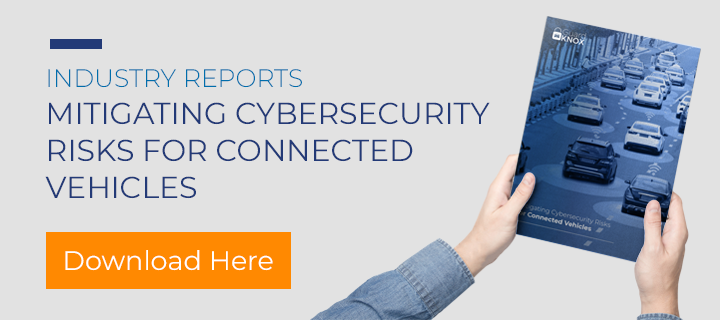Navigating through regulatory demands in the automotive landscape is typically seen as a necessary business cost: a set of requirements that must be adhered to before a vehicle is ready for sale.
In a previous post, we explored the formidable challenges facing SDVs, including the dynamic nature of regulations such as the General Safety Regulation (GSR).
The dynamic capabilities of Software-Defined Vehicles (SDVs) provide OEMs with the ability to adhere to existing and upcoming regulations without significantly increasing cost and even use regulations as an opportunity to offer new services throughout the vehicle’s lifetime.
Simplifying Software Management and Updates for Regulatory Purposes
Unlike traditional vehicles, SDVs possess the capability to update software seamlessly during the production process or even after rolling off the production line. Instead of 100-150 different ECUs (Electronic Control Units), each with its own software and configuration, SDVs are controlled by a handful of HPC (High Performance Computers), Zonal Gateways (also known as Gateway Controllers), and edge devices that can be updated with new services or changes.
The reduction in hardware costs from many computers to fewer is one benefit; so is eliminating the need for recalls when an OTA update can address a discovered vulnerability or add new capabilities required by regulations.
A simpler and more streamlined software management approach is key to unlocking the value proposition SDVs have promised for years. But that necessitates that security and communication controls between all vehicle components go hand-in-hand so that any changes and updates don’t result in unforeseen security mishaps. Secure gateways, such as those offered by GuardKnox, centralize and secure all communication within the vehicle, ensuring a robust foundation for accommodating future needs.
Looking at GSR as the SDV Software Management Use Case
The Vehicle General Safety Regulations (or GSR for short) cover many different requirements that the automotive industry must follow. In addition, not all requirements start at the same time, adding additional work and headaches for Tier 1 and OEMs.
Some of the main situations where SDVs will shine can be found in the Technical Rules for Automated Vehicles: “They will cover testing procedures, cybersecurity requirements, data recording rules as well as monitoring of safety performance and incident reporting requirements by manufacturers of fully driverless vehicles.” (Italics added for emphasis.) While SDV and autonomous vehicles are not one and the same (though there most probably will be autonomous SDV in the future), the increased software complexity of autonomous vehicles provides an opportunity for SDVs to leverage its software management to the greatest effect.
The relationship between cybersecurity requirements and the applications or services offered by modern vehicles is a complex and dynamic one. Our US CTO provided a high-level overview of the cybersecurity and safety requirements for next-gen vehicles but the main takeaway for GSR, and other regulations, is that an agile and update-able cybersecurity capability is needed to meet changing security and safety rules.
The focus on reporting and data collection is also an ever-changing field in Autonomous Driving. While autonomous vehicles are rapidly evolving and advancing, the rules about what data must be collected, how it can be handled, and when/how it should be reported are not fully defined yet. This uncertainty would be a large problem if vehicles needed to be retrofitted with additional ECU and manually installed with new software to add these capabilities. But the SDV’s use of Over-The-Air updates make these previously big threats into a manageable and relatively simple software update, even as regulations further define data collection and reporting demands.
Why Driver Monitoring Systems (DMS) is Going to Favor SDV
The GSR requires that all new passenger cars and light commercial vehicles sold in the EU have a DMS installed this year. (2024.) Traditionally, vehicles would need to be developed and assembled with an ECU (or multiple) to manage the DMS software.
The strength of Software-Defined Vehicles is that OEMs can produce new vehicles and download the DMS software – or add continuous tweaks, bug fixes, and new features – while the vehicle is already on the production line. Or after it rolls of production. In fact, they could even ‘push’ DMS to existing vehicles on the road to differentiate their product offering: turning a regulatory requirement into a business selling point.
This software flexibility is built on top of next-generation E/E architectures where the hardware components of the vehicle are selected and assembled with the intention of providing additional features and services throughout the vehicle’s lifetime in a seamless and simple manner. GuardKnox’s Secure Gateway centralizes and secures all in-vehicle communication while providing the powerful processing power required for next-generation processing power needs, paving the way for vehicles that meet and exceed customer needs.
Removing the Headache of GSR
The shift towards Software-Defined Vehicles offers OEMs many benefits beyond merely cost reduction and new revenue streams. By embracing SDVs, OEMs can navigate regulatory needs more effectively, leveraging the inherent flexibility of vehicles built with software flexibility by design to meet evolving requirements without the need for hardware modifications, recalls, and manual installation of new software. This not only enhances regulatory compliance but also fosters greater adaptability and innovation within the automotive industry, ultimately benefiting both manufacturers and consumers alike.







